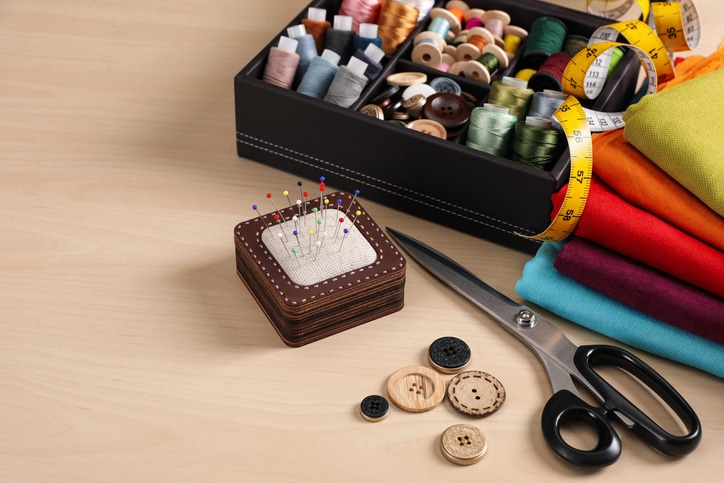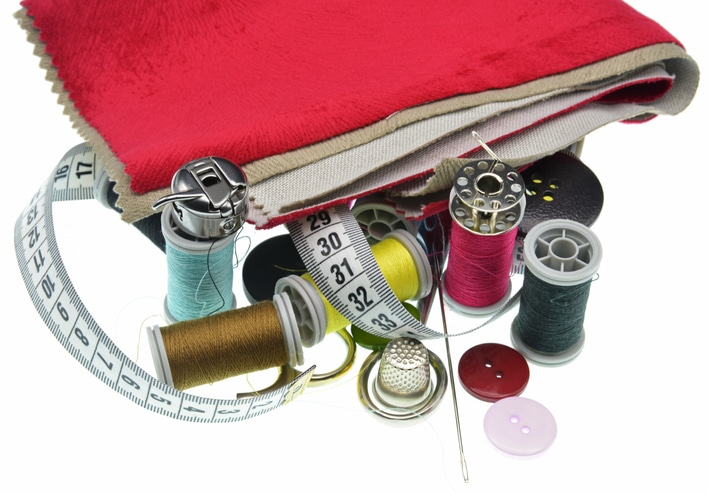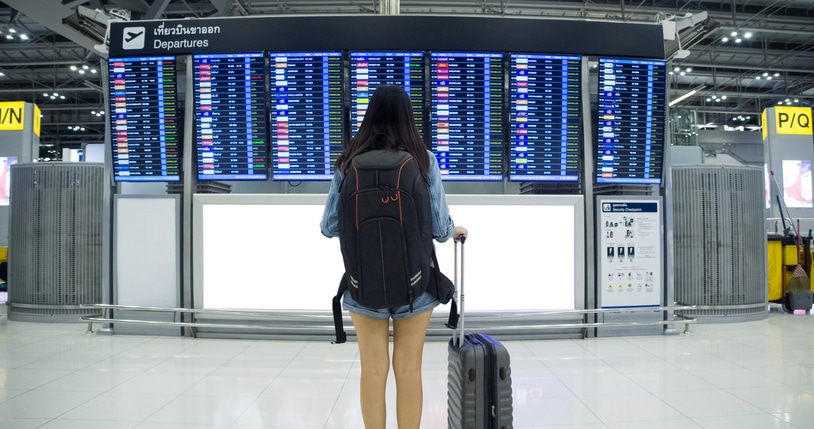Being separated from your beloved sewing projects while traveling can be daunting for avid sewers and crafters. One common question that arises is whether sewing needles are allowed on airplanes. After all, nobody wants to have their cherished sewing tools confiscated at the airport security checkpoint!
In this article, we will make it crystal clear: Can you bring sewing needles on a plane? It doesn’t matter if you’re a sewing pro or just starting; you must know the rules to ensure your favorite sewing tools are acceptable at airport security.
We’ll walk you through airport security rules, discuss the different types of sewing needles, and share some handy tips to ensure your trusty sewing companions make it through the flight with no issues. So, stick around if you’re off to a sewing workshop, quilting event, or want to keep busy with your sewing while traveling. We’re here to help you navigate the ins and outs of bringing sewing needles on a plane without stress!
TSA Regulations on Sharp Objects
TSA’s sharp object guidelines are based on a balance between allowing passengers to carry essential items and preventing potential security threats. They classify sharp objects into two categories: those generally allowed in your carry-on and those restricted.
Accepted Tools in Your Carry-On
Here are some sharp objects that are allowed on airplanes:
- Sewing Needles: Good news for sewists! Sewing needles, both hand-sewing and machine needles, are generally permitted in your carry-on baggage. These fall under the “tools” category and are considered safe for air travel. However, it’s advisable to pack them securely to prevent accidental pricks.
- Scissors: Small scissors with blades measuring less than 4 inches from the fulcrum (the pivot point) are typically allowed. These are handy for snipping threads or quickly adjusting your sewing projects.
- Thread Cutters: Thread cutters, often resembling small, circular blades, are usually acceptable. They serve as a convenient alternative to scissors.
Items to Avoid Bringing on Board
But, by contrast, these items will end up confiscated:
- Large Scissors: Scissors with blades over 4 inches are generally not allowed in your carry-on. It’s best to pack larger scissors in your checked baggage to avoid any hassles at security checkpoints.
- Rotary Cutters: Rotary cutters with exposed blades are considered dangerous and are prohibited in your carry-on luggage. Pack them in your checked bag or leave them home if you can manage without them during your trip.
- Box Cutters, Utility Knives, and Razor Blades: These sharp tools, often used for purposes other than sewing, are strictly prohibited in your carry-on. Leave them at home to avoid any complications during security screening.

Can You Bring Sewing Needles in Your Carry On Bag?
The TSA guidelines make it clear: sewing needles are allowed on airplanes! So, if you want to bring an embroidery project on your flight, you can. However, you must know the best practices to transport your sewing tools over long distances.
Regarding sewing needles in your carry-on, the TSA generally takes a pragmatic approach. They view sewing needles as essential tools rather than security threats. This means you can typically pack your sewing needles without much concern about them being confiscated.
However, it’s crucial to consider safety for yourself and airport security personnel. Sewing needles are sharp, and accidents can happen. Ensure your sewing needles are secured in a safe container to avoid pricks and delays during security checks.
Types of Needles and Security Considerations
Consider the types of needles you plan to bring. With their smaller size and blunt ends, hand-sewing needles are less likely to raise eyebrows during security screening. However, machine needles, especially those used in industrial or heavy-duty sewing, might appear more substantial on X-ray scans, potentially leading to additional scrutiny.
Be prepared to explain the purpose of your sewing needles if asked by security personnel. Use specialized or unique needle types, such as those for leatherwork or embroidery. It might be helpful to carry them in their original packaging, making their purpose more evident.
Can You Bring Knitting Needles or Crochet Hooks on an Airplane?
If you’re multi-stitchual, you may travel with a knitting or crochet project to keep your hands busy. Unsurprisingly, the TSA also has regulations around knitting needles and crochet hooks. Know the rules if you want to bring your knitting needles on an airplane.
Before diving into the specifics of TSA rules, it’s essential to distinguish knitting needles and crochet hooks from sewing needles. Knitting needles and crochet hooks are typically longer and have blunt ends, setting them apart from the sharp, pointed tips of sewing needles. This distinction is crucial as it influences how airport security perceives these crafting tools.
TSA’s Stance on Knitting Tools
The TSA takes a relatively lenient stance on knitting needles and crochet hooks in carry-on luggage. These items are generally permitted, but some conditions apply. Consider carrying a self-addressed, stamped envelope to avoid potential issues. This way, if an agent deems your knitting needles or crochet hooks unfit for travel, you can easily mail them to your destination.
Opt for circular needles with flexible cables when traveling with knitting or crochet projects, as they’re less likely to raise security concerns and offer versatility. Additionally, consider carrying spare or less expensive crafting tools in case you encounter issues with security. Always check your airline’s specific policies regarding knitting needles and crochet hooks to ensure a hassle-free journey while keeping your creative projects on track.
Practical Tips for Traveling with Sewing Needles on an Airplane
To ensure a smooth journey when traveling with sewing needles on an airplane, adhere to TSA guidelines diligently. Store your sewing needles in your carry-on luggage as recommended, and remember that blunt-ended sewing needles are generally preferred to avoid any potential issues during security checks.
Quality Storage Solutions
Invest in quality needle cases or holders to store your sewing needles securely during travel. These cases prevent accidental pricks and keep your needles organized and readily accessible. Additionally, consider using a pin cushion or needle minder to enhance safety by keeping your needles in one place.

Compact Sewing Kits for Travel
It’s worth investing in a dedicated travel sewing kit for crafters who frequently embark on sewing adventures. These compact kits often include a variety of sewing essentials, including needles, thread, scissors, and more, all within TSA-compliant parameters. Such kits streamline the packing process and ensure you have everything you need for your projects while on the go.
International Travel Considerations
Regarding international travel with sewing needles, it’s essential to note that rules can vary between countries and airlines. While many international airlines follow similar guidelines to the TSA, it’s crucial to research the specific regulations of both your departing and destination countries. Some countries may have stricter rules or different interpretations of what is allowed in carry-on luggage.
Prepare for International Flights Regulations
To avoid any surprises or complications, consider contacting your destination’s airline and customs authorities in advance to clarify their stance on sewing needles. Additionally, it’s wise to carry a copy of your home country’s relevant sewing needle regulations, which can be handy in case you encounter any discrepancies during your journey.

Safe Crafting Adventures
In conclusion, whether you’re a sewing enthusiast, a knitting aficionado, or a crochet devotee, the key to a successful crafting journey in the air lies in preparedness and compliance. Familiarize yourself with the specific regulations of your airline and destination, pack your crafting tools with care and safety in mind, and always be ready to answer questions from security personnel if needed.
By taking these measures and staying informed, you can soar to new creative heights while enjoying your crafts during flights and ensuring your crafting adventures remain as smooth as silk, even at 30,000 feet. Happy crafting, wherever your travels may take you!
For stowing away your sewing needles and other notions at home, check out Arrow Sewing! Whether you need a sewing table with space for all your materials or a cabinet for your fabrics and patterns, we’ve got you covered. Our sewing furniture is designed with the passionate sewist in mind. Check out our catalog here!
